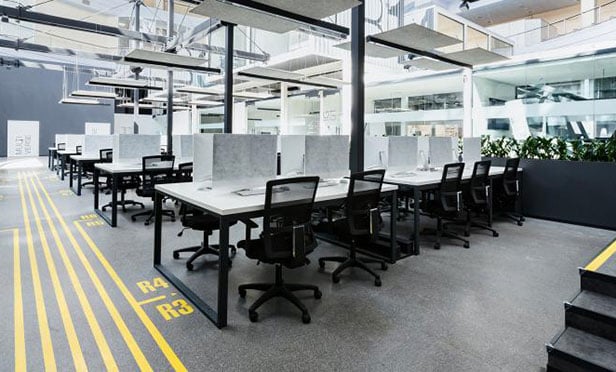
As many executives plan their return-to-office (RTO) initiatives, now is the time to ensure that your organization's efforts provide valuable support for employees with disabilities. Evaluating potential impacts before finalizing decisions is one of the most effective ways to ensure that the outcomes positively affect everyone.
Collaborate to reduce barriers
People with disabilities have abundant lived experiences that make them the experts of what they do and do not need to work productively after returning to the office. Since many organizations established remote working policies years ago, there’s a good chance that many of your current workers have never gotten work done in physical offices. However, the difficulties faced by employees with disabilities differ depending on individual circumstances. Taking the time to hear about the particulars is essential before working together to address the challenges of RTO.
A 2024 study of knowledge workers in the United States found that a third of respondents had neurodivergent differences, disabilities or health conditions. Additionally, 21% of those mentioned that their conditions made it difficult to attend work in person.
Recommended For You
Start by upholding an inclusive culture where people feel comfortable disclosing their disabilities and explaining the associated difficulties. Then, create a streamlined process where people can describe the particulars and ask for accommodations if needed. The information they provide will make it easier to see where accessibility gaps exist and how workplaces can address them. Determining whether accommodations would affect others if granted is also important.
Perhaps someone requests to wear earplugs or work in a quieter area because they become easily overwhelmed and distracted. Granting those accommodations is an easy win because it probably does not require the workplace to make extensive adjustments and should increase the employee’s productivity.
Provide information to support informed participation
Employees will be much more open to returning to their offices if they can engage smoothly with those processes.
The Americans with Disabilities Act (ADA) has been an instrumental piece of legislation that has instructed workplaces on how to best accommodate people with disabilities since 1990 by specifying how to remove common obstacles. However, many employers use the ADA as a checklist, assuming that their building and all the events that take place within it are accessible as long as the baseline requirements are followed. Instead, it’s vital to treat the ADA as a broad framework, a foundation for creating a truly inclusive and accessible RTO experience. Effective RTO implementation requires ongoing effort outside of the ADA and a commitment to understanding the specific needs of individual employees.
This commitment to inclusivity and transparency might look like providing comprehensive details when planning RTO events to help everyone anticipate what to expect. For example, indicating that a party is in a fully accessible venue can offer peace of mind to employees with disabilities. Similarly, proactively inform attendees about potential triggers like fireworks or strobe lights.
According to research published in 2024, 60% of those surveyed had not attended workplace events or meetings because of insufficient accessibility. The more details people have in advance, the better equipped they will be to decide if they can and should come. Otherwise, they may arrive and find unpleasant surprises that cause them to leave early or not enjoy the experience.
Many museums and other places that frequently welcome those with disabilities publish detailed guides about everything from the site terrain to restroom locations and the average number of steps a person will take between the parking lot and the main entrance. Creating something similar for your office and making it publicly available for current or potential employees and visitors is a practical way to demonstrate an accessibility commitment.
Review benefits packages to improve retention rates
RTO policies can bring many advantages to workers. Some people find it difficult to connect with others unless they interact in person. Then, requiring everyone to work in the same location could increase networking benefits. Additionally, physical workspaces can facilitate brainstorming and creative thinking.
However, when Amazon announced its RTO policies, 68% of workers said the change made them somewhat or very likely to leave the company within a year. Although having to come back to the office may have been the main driver of that sentiment, it likely was not the only factor. Most people consider numerous aspects when evaluating how much they like their jobs and companies and what keeps them there.
Look over your organization’s salary scale and benefits packages to see how they compare with similar companies. People may browse employment listings for months before trying to make a move. They compare things such as pay, insurance and vacation days before deciding whether to apply for other options.
What could you do to make it worthwhile to come to the office each day? Many younger generations have not yet started putting money away for retirement. Offering a 401k contribution could catch their attention. You should also provide benefits that ease the challenges that potentially exist for all workers but are especially prevalent for those with disabilities.
Think about the additional expenses people will have once they return to their offices. Reimbursing their travel time and costs could be significant. Those with disabilities often have above-average expenses for needs such as therapies, medications, mobility aids and adapted living products. RTO policies may require them to adjust their budgets to compensate, but thoughtfully offered benefits can also help.
Remain open to feedback and changes
Besides applying the above tips, you should listen to employees’ input about the company’s RTO policies and the associated transition. They will be the best sources for knowing what is going well and which particulars may need tweaking for mutually beneficial results.
© Touchpoint Markets, All Rights Reserved. Request academic re-use from www.copyright.com. All other uses, submit a request to [email protected]. For more inforrmation visit Asset & Logo Licensing.






